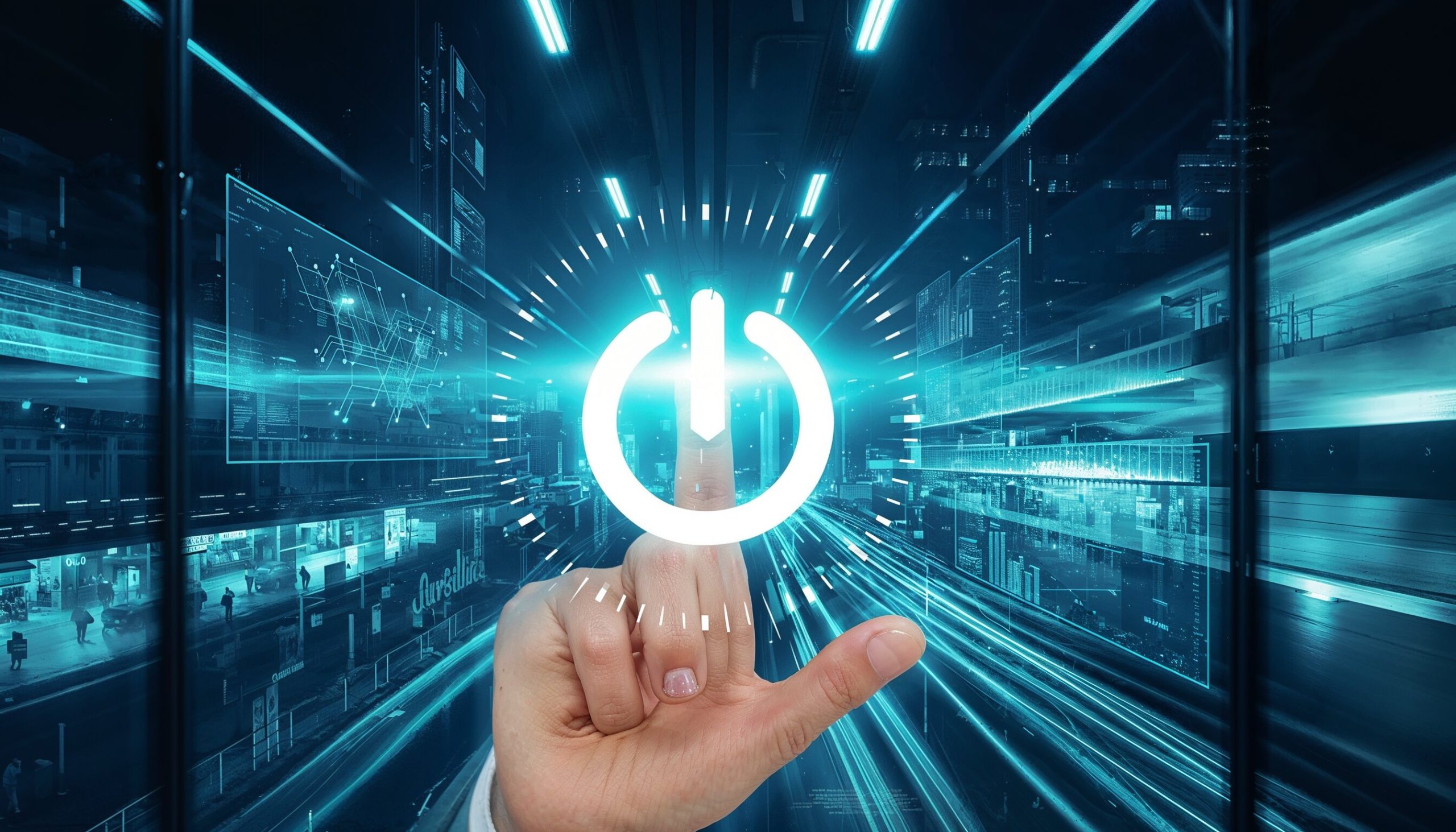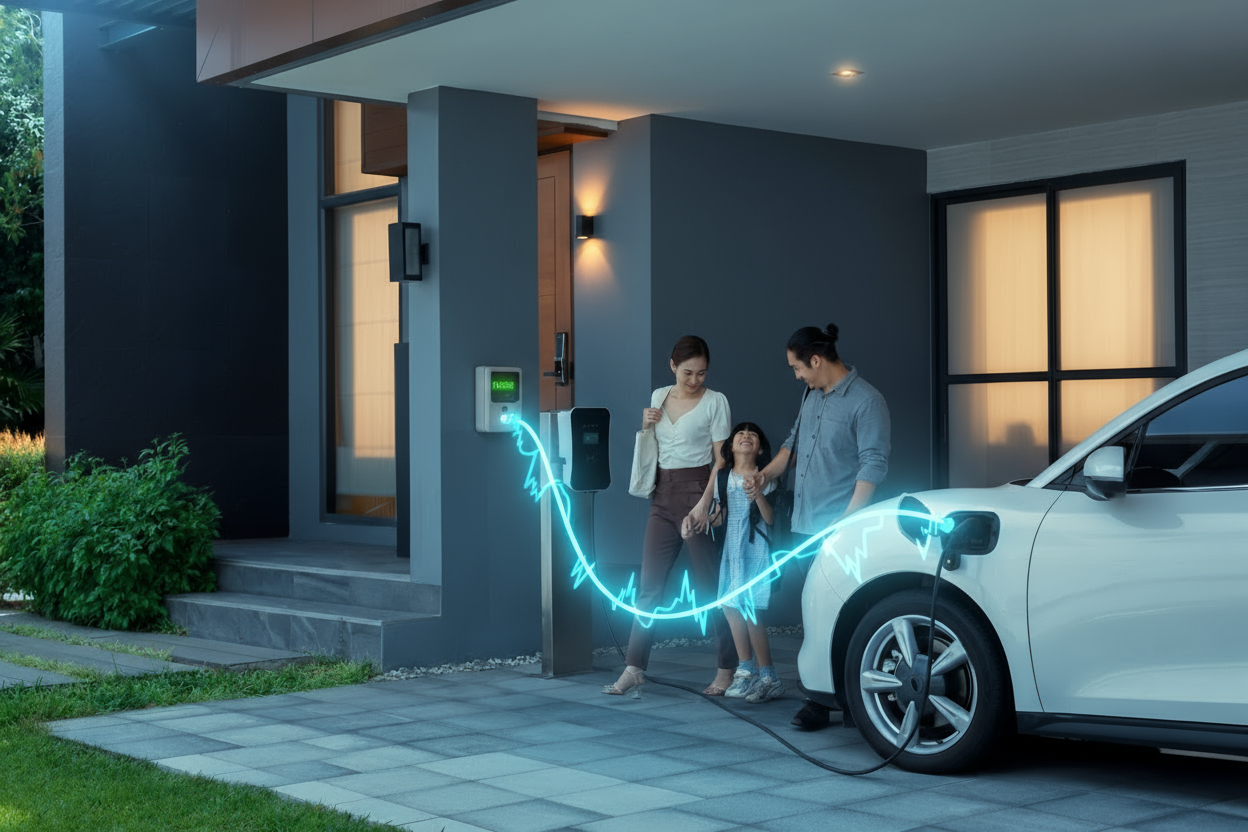Electric Vehicle (EV) battery labs are facing increased demands. They must rigorously validate performance, guarantee safety, shorten development cycles, minimize energy waste, and operate with maximum cost-efficiency.
Traditionally, these labs relied on separate, specialized equipment: a DC power supply for charging and an electronic load for discharging. However, this conventional approach comes with significant limitations: it demands more hardware, consumes valuable lab space, complicates wiring, introduces additional risks, and leads to considerable energy loss.
This is where Bidirectional Power Supplies step in. These innovative devices cleverly combine both sourcing (charging) and sinking (discharging or regenerative loading) capabilities into a single, compact unit. In today’s advanced test and simulation environments for EV batteries, they are rapidly becoming the new standard. Why this swift adoption? Because they offer high efficiency, flexibility, precision, and sustainability.
In this article, we will explore:
- What defines bidirectional power supplies and how they fundamentally differ from outdated traditional setups.
- Real-world product example to showcase their practical capabilities.
- The key benefits they deliver specifically within EV battery simulation and test environments.
- Essential technical specifications to consider when evaluating and procuring these advanced systems.
- Market trends that are accelerating their widespread adoption across the industry.
- Best practices for seamlessly implementing these systems within your test labs.
- Potential challenges and risks to be aware of during deployment.
- What Are Bidirectional Power Supplies & Why They Matter
- Key Benefits for EV Battery Simulation & Test Environments
- Technical Requirements & Specifications: What to Evaluate
- Market Trends & Context Driving Adoption
- Best Practices for Implementing Bidirectional Supply Test Environments
- Challenges & Risks: What to Watch Out For
- Conclusion: The New Standard for EV Battery Testing
- Frequently Asked Questions (FAQ)
What Are Bidirectional Power Supplies & Why They Matter
Definition and Core Functionality
At its core, a bidirectional power supply is a powerhouse in a single unit. Unlike traditional testing setups that require separate devices for charging (sourcing power) and discharging (sinking power), these advanced units can do both. They fluidly switch between supplying electrical power to charge a battery and absorbing power as an electronic load, often regenerating that energy back into the grid.
Think of it this way: When charging, the supply acts like a standard DC power source, sending positive voltage and current into the battery. But when discharging, it reverses its role, effectively drawing power (positive voltage, negative current) from the battery, simulating real-world usage or performing a discharge test. This dual capability eliminates the need for bulky, separate equipment, simplifying your test rig considerably.
Traditional test environments, on the other hand, demand distinct DC power supplies for charging and electronic loads for discharging. This older method often involves manual or relay-based switching between modes, leading to slower operations, increased complexity, and significant energy losses as excess power is simply wasted as heat.
Key Capabilities in Action: Product Example
To illustrate the power and versatility of these systems, let’s take a look at Kikusui’s specialized line of bidirectional power supplies.
Kikusui PXB-20K Series
The PXB-20K Series stands as Kikusui’s flagship offering for bidirectional DC power supplies, explicitly designed for both sourcing (supplying) and sinking (absorbing) electrical power. These units are precisely engineered with a crucial power regeneration function, allowing absorbed energy to be efficiently returned to the AC grid with 90% or more regeneration efficiency. This makes them truly bidirectional, functioning simultaneously as a high-performance power supply and a regenerative electronic load.
Available with an output power of 20 kW in a compact 3U unit, the PXB-20K Series offers a range of rated output voltage options, including 50 V, 250 V, 500 V, 1000 V, and 1500 V (e.g., the PXB20K-500 offers ±120 A). Their robust sink current capability ensures precise control during both charging and discharging phases. Furthermore, these units support parallel operation of up to 10 units to achieve higher power systems, such as 200 kW, providing flexible solutions for demanding test setups. The high regenerative efficiency of the PXB-20K Series is a key benefit, designed to save energy and significantly reduce waste heat in demanding test environments. (Source: Kikusui Global)
Because of these advanced capabilities, bidirectional power supplies have become indispensable across critical stages of EV battery development and testing. They are essential in R&D (Research & Development), Quality Assurance (QA), production line testing, battery simulation, and for evaluating chargers, inverters, and Battery Management Systems (BMS). They are fundamentally changing how EV batteries are brought to the market.
Key Benefits for EV Battery Simulation & Test Environments
Adopting bidirectional power supplies marks a significant upgrade for any EV battery testing facility, delivering a multitude of benefits that directly address the pressures faced by manufacturers today.
Unprecedented Energy Efficiency & Regeneration
One of the most compelling advantages is their remarkable energy efficiency and regeneration capabilities. Unlike traditional electronic loads that simply dispel absorbed energy as wasted heat, bidirectional power supplies are engineered to feed this energy back into the grid, or directly into the facility’s main power supply. This regenerative capability dramatically reduces energy consumption. For instance, the Kikusui PXB-20K series boasts a regeneration efficiency of 90% or more, meaning a substantial portion of the energy drawn from the battery during discharge is recaptured rather than lost. This is a game-changer for reducing your operational carbon footprint.
Significant Cost Savings (Operational & Infrastructure)
The move to bidirectional supplies translates directly into substantial cost savings. Initially, the upfront CapEx (Capital Expenditure) can be lower due to requiring fewer pieces of test equipment—one bidirectional unit replaces both a DC power supply and an electronic load. Beyond the initial purchase, operational savings are considerable. Less heat loss means reduced HVAC (Heating, Ventilation, and Air Conditioning) and cooling costs, as your lab isn’t fighting against wasted heat. Furthermore, the simplified setup leads to reduced wiring and fewer switching components, which minimizes maintenance requirements and lowers the risk of system failures. The most direct saving comes from energy cost reductions; regenerating power back to the grid means smaller electricity bills for your facility.
Maximized Space & Floor-Footprint Efficiency

Bidirectional power supplies help optimize it lab space. They offer high power density, packing significant capability into compact . For example, a 20 kW unit from the Kikusui PXB-20K series occupies just a 3U rack space, making it highly efficient for its output. This high density means labs can scale their testing capacity without demanding extensive floor space or oversized equipment racks, allowing for more flexible lab layouts and potentially accommodating more test bays within the same space requirement.
Enhanced Test Accuracy, Flexibility & Real-World Simulation
These advanced supplies elevate the quality and realism of your testing. They provide the accuracy and flexibility needed to precisely simulate complex charge/discharge cycles, accelerate battery aging tests, monitor state-of-health, and accurately assess the effects of temperature variations. Many units come with built-in waveform functions, allowing you to create custom waveforms, pulsed loads, or simulate dynamic behaviors such like those experienced during EV regenerative braking or sudden load spikes. They react quickly and precisely, allowing tests to perfectly copy real-world conditions. This gives you more reliable test results
Strong Alignment with Sustainability & ESG Goals
Finally, for companies with strong Environmental, Social, and Governance (ESG) commitments or broader sustainability goals, bidirectional power supplies are an ideal fit. By significantly reducing energy waste through regeneration and high efficiency, they directly support green lab initiatives and help meet corporate carbon reduction targets. In an increasingly environmentally conscious market, this alignment can also offer a competitive advantage and may even qualify for regulatory incentives or avoid penalties associated with energy inefficiency.
Technical Requirements & Specifications: What to Evaluate
When selecting bidirectional power supplies for EV battery testing, careful evaluation of technical specifications is important. The right choice ensures your test environment is efficient, accurate, and future-proof.
| Specification | Why It Matters |
| Voltage Range & Current Rating | EV battery packs vary significantly, from low-voltage (12V/24V/48V) to high-voltage (400V, 800V, 1500V, etc.). The power supply must comprehensively cover your expected operating ranges. Example: Kikusui PXB-20K series offers models up to 1500V. |
| Power Rating & Power Density | Crucial for running tests quickly, achieving high throughput, and simulating demanding load cycles. Also consider the unit’s physical size (U rack height), weight, and cooling requirements to fit your lab space efficiently. |
| Regenerative Efficiency | This is the percentage of energy absorbed from the battery that can be returned to the grid or facility mains. Higher efficiency directly translates into greater operational cost savings and reduced environmental impact. Example: Kikusui PXB-20K series boasts 90% or more efficiency. |
| Transient Response / Slew Rate | For tests requiring rapid transitions between charging and discharging, or simulating highly dynamic loads (e.g., EV regenerative braking), the unit must switch and respond in milliseconds or less to accurately mimic real-world conditions. |
| Custom Waveform Capability | Essential for simulating realistic behavior, such as complex driving cycles, battery degradation, ripple/noise conditions, or even emulating other power sources (PV, fuel cells). Look for built-in function generators or custom waveform capabilities. |
| Accuracy, Stability, Noise/Ripple | For precise measurement of critical battery parameters (voltage, current, capacity, internal resistance), the output must be highly stable with minimal noise and ripple. High measurement resolution (e.g., good ADC/DAC) is vital for reliable data. |
| Interfaces & Programmability | Modern test environments demand seamless integration. Look for remote control options like USB, Ethernet, CAN, and GPIB, ensuring the unit can be easily integrated into automated test systems and production lines. |
| Safety Protections & Standards Compliance | Non-negotiable for lab and device safety. Features like overvoltage, overcurrent, overpower, and thermal protection are standard. Compliance with automotive test standards (e.g., LV123, LV148) and internal battery safety protocols is critical. |
Market Trends & Context Driving Adoption
Understanding the strong forces pushing bidirectional power supplies into the spotlight is crucial for B2B leaders. These are not just gradual improvements. They represent a strategic shift in how EV batteries are developed and validated.
The most significant driver is the accelerated growth of the EV market and rising regulatory pressure. As electric vehicle adoption rapidly expands globally, battery manufacturers are under immense pressure to deliver products faster, with higher performance, and uncompromising safety. This necessitates testing labs that can operate with greater speed, offer more accurate simulation capabilities, and maintain sustainable operational practices. Simultaneously, stringent regulatory safety and performance standards—from general automotive battery safety to specific emissions and efficiency requirements—demand complex and reliable validation tools that traditional setups simply can’t provide.
Hand-in-hand with market growth are green lab initiatives and energy efficiency mandates. Corporate Environmental, Social, and Governance (ESG) targets are no longer optional, but central to business strategy. R&D and manufacturing facilities are actively seeking ways to reduce their energy waste and carbon footprint. Bidirectional power supplies, with their regenerative loading capabilities, directly address this by returning absorbed energy to the grid, dramatically lowering the energy consumption associated with extensive battery testing.
Furthermore, the demand for modularity and scalability is reshaping lab infrastructure. Modern test labs require the flexibility to scale their power systems up or down efficiently, often by connecting multiple units in parallel or series. Manufacturers like Kikusui offer units that can be configured in master/slave or parallel arrangements, allowing labs to adapt their test racks to evolving project needs without requiring entirely new, large, and inflexible equipment.
Finally, advancements in component technologies and the overall demand for automated test & data analytics are making them spread faster. The continuous improvement in semiconductors, such as Silicon Carbide (SiC) and Gallium Nitride (GaN), enables higher performance and greater efficiency in bidirectional power supplies, making them more viable and robust. Meanwhile, modern test labs are not merely validating hardware; they require rich, detailed data on battery degradation, performance over its lifecycle, and predictive failure analysis. Instruments that seamlessly combine power supply, electronic load, advanced waveform generation, and comprehensive remote programmability perfectly meet this demand for integrated, data-driven testing.
Best Practices for Implementing Bidirectional Supply Test Environments
Adopting bidirectional power supplies is a strategic investment that generates value when implemented thoughtfully. For engineers and leaders in EV battery simulation and test environments, a structured approach is key to maximizing efficiency, safety, and return on investment.
Precisely Define Your Test Requirements
Before you invest in a bidirectional power supply, carefully define your specific test requirements. This involves pinpointing the exact voltage and current ranges needed to cover all expected EV battery packs (from low-voltage batteries to high-voltage traction batteries). Crucially, you must outline the precise charge/discharge cycles you’ll be running, whether for aging, performance validation, or quality control, and identify the expected waveform or load types—be they steady, pulsed, or complex custom patterns. Furthermore, consider your desired test throughput: how many battery packs or cells need to be processed per day, and how frequently modifications will occur. This foundational step ensures you select equipment that perfectly matches your operational needs.
Assess Infrastructure & Regeneration Readiness
Implementing regenerative power supplies requires careful consideration of your existing infrastructure. It’s vital to confirm that your lab’s power grid is technically capable of receiving energy back safely, and that your utility company’s policies permit this regeneration. Beyond grid interaction, plan for robust cooling solutions to manage any residual heat, ensure stable input AC power quality (including Power Factor Correction, or PFC), and integrate appropriate safety devices. A thorough infrastructure assessment prevents costly surprises down the line.
Develop a Robust Integration and Automation Strategy
The true power of modern test equipment lies in its ability to integrate seamlessly. Plan a comprehensive integration and automation strategy by leveraging programmable interfaces such as Ethernet, CAN, and GPIB. These enable remote control and sophisticated sequence programming. Automating your test routines—including charge/discharge cycling, data capture, and report generation—will drastically improve efficiency, reduce human error, and accelerate development cycles.
Prioritize Safety & Regulatory Compliance
In any battery testing environment, safety is one of the top priorities. Ensure your bidirectional power supply setup includes comprehensive safety interlocks, continuous temperature monitoring, and robust protection. Equally important is adherence to relevant standards, including automotive test standards (e.g., LV123, LV148) and all applicable battery safety protocols. A proactive approach to safety and compliance protects personnel, equipment, and your company’s reputation.
Maintain Calibration & Measurement Precision
To guarantee the reliability of your test data, calibration and measurement precision must be a continuous focus. Regularly calibrate all voltage and current measurement paths to ensure accuracy. Pay close attention to monitoring noise/ripple and any transient inaccuracies, especially when your tests are designed to model complex real-world battery systems. High precision ensures that your test results are trustworthy and repeatable.
Align with ESG / Sustainability Goals
Finally, leverage bidirectional power supplies to actively align with your corporate ESG (Environmental, Social, and Governance) and sustainability goals. By tracking the energy saved through regeneration, you can include solid metrics in your sustainability reporting, showcasing a commitment to environmental responsibility. Consider models with higher regeneration efficiency, even if the initial investment is slightly higher, as the long-term energy savings and positive environmental impact often justify the upfront cost.
Challenges & Risks: What to Watch Out For
While bidirectional power supplies offer significant advantages, no advanced solution is without its considerations. Manufacturers adopting these systems must be aware of potential challenges to ensure smooth implementation and maximize their benefits. Proactively addressing these difficulties is key to a successful test environment.
Initial Cost and Return on Investment (ROI) Timing
One of the first considerations is the initial investment cost. Bidirectional units are sophisticated pieces of equipment and, by nature of their dual functionality and advanced features, tend to have a higher upfront cost compared to purchasing separate, simpler DC power supplies (source-only) or basic electronic loads. Therefore, accurately calculating the Return on Investment (ROI) is crucial. This ROI is heavily dependent on factors such as your specific test volume, the extent of energy savings achieved through regeneration, and the long-term benefits of reduced space and complexity. For that reason a thorough cost-benefit analysis considering the entire lifecycle is essential.
Complexity of Configuration and Maintenance
The enhanced functionality of bidirectional power supplies, while powerful, can also introduce a degree of complexity in configuration and maintenance. More features and advanced control paths inherently mean more potential points of failure or misconfiguration compared to simpler, single-function devices. To mitigate this, your technical staff will require specialized training to fully understand the unit’s capabilities, programming interfaces, and adjustment procedures. Investing in training ensures that your team can confidently operate and maintain these advanced systems.
Ensuring Model Accuracy vs. Real-World Battery Behavior
A significant challenge in battery simulation is ensuring the accuracy of the test model against real-world battery behavior. Batteries are complex electrochemical systems whose degradation, performance, and internal characteristics are profoundly affected by various factors, including temperature, charge/discharge cycles, cell balancing, and internal resistance. Effective bidirectional power supplies must be capable of supporting intricate test regimes that accurately reflect these real-world conditions and their subtle interactions. This often requires advanced programming capabilities and precise control to truly mimic battery degradation over its lifespan.
Inherent Safety Risks
Working with high-power electrical equipment, especially in the context of battery testing, always presents safety risks. The use of high voltages, the dynamic flow of regenerative energy, and the potential for events like thermal runaway, overcurrent, or overvoltage all require close attention. It is important to design the test rig with robust protection circuits, including emergency stops and fail-safes. Strict adherence to valid safety protocols, thorough risk assessments, and regular safety audits are important to protect your personnel and prevent damage to your equipment.
Grid & Utility Constraints
Finally, adopting regenerative power supplies can bring grid and utility constraints into play. In some jurisdictions (including parts of the U.S. and globally), feeding energy back to the local facility mains or the broader grid may require special interconnection agreements, certifications, or even specific utility policies. Legal and regulatory frameworks can vary significantly, potentially limiting how and when regeneration can be utilized. Manufacturers must research and understand these local constraints early in the planning phase to ensure compliance and avoid unexpected limitations on their regenerative capabilities.
Conclusion: The New Standard for EV Battery Testing
Bidirectional power supplies are no longer an emerging technology. They are rapidly becoming the essential new standard in EV battery simulation and test environments. Their unique ability to seamlessly combine sourcing and sinking functions, efficiently regenerate energy, support flexible waveform generation, and offer broad voltage/current ranges fundamentally transforms lab operations. By simultaneously reducing operational costs and space requirements, these systems represent the preferred choice for labs committed to achieving unparalleled speed, precision, and sustainability.
The transition to bidirectional solutions is both a strategic imperative and a practical necessity. Decision-makers who delay or ignore this crucial shift risk falling behind in critical areas like efficiency, long-term sustainability goals, and the ability to meet evolving regulatory demands. Embracing this technology now is an investment in future competitiveness and innovation.
Ready to Optimize Your EV Battery Testing? Take the Next Step.
The journey toward a more efficient and sustainable EV battery test environment begins today. If you’re responsible for EV battery testing, R&D, or lab management, consider these actionable steps:
- Audit Your Current Setup: Quantify the energy currently being wasted in your lab and identify opportunities to integrate equipment with bidirectional units into your setup.
- Request Demos & Consultations: Reach out to leading manufacturers and request demonstrations of bidirectional power supplies (e.g., the Kikusui PXB-20K series) that precisely match your voltage and current requirements.
- Build a Robust Business Case: Develop a comprehensive model comparing the Capital Expenditure (CapEx) against the significant long-term operational savings in energy, cooling, and space.
- Align with Strategic Goals: Ensure your upcoming lab builds or equipment upgrades are strategically aligned with both your corporate sustainability targets and relevant automotive and safety test standards.
Frequently Asked Questions (FAQ)
Here are quick answers to some of the most common questions about bidirectional power supplies in EV battery testing:
| Question | Answer |
| Q1: What does “bidirectional” mean for power supplies? | It means the device can both source power (supply power for charging a device under test) and sink power (act as an electronic load for discharging or handling regenerative energy). It switches dynamically and often seamlessly between these modes. |
| Q2: How efficient is regeneration, and why does it matter? | Many modern bidirectional supplies, like the Kikusui PXB-20K series, achieve 90% or more regenerative efficiency. High efficiency is vital because energy fed back to the grid significantly lowers electricity costs, reduces cooling needs, and supports sustainability. |
| Q3: What voltage/current ranges are typical for EV testing? | This depends on the specific battery application. For EV battery pack R&D, you often need high-voltage ranges (e.g., 400V, 800V, up to 1500V or 2000V) and substantial current. For smaller cells or modules, lower voltages with higher currents might be more relevant. |
| Q4: Are there specific standards for battery testing with BPS? | Yes. Key examples include LV123 and LV148 for automotive battery/charger/inverter testing, and various safety standards for battery management and over-protection. Ensure your equipment and processes comply. |
| Q5: What are the main trade-offs of bidirectional supplies? | They typically have a higher upfront cost and introduce more complexity in control and software. However, for labs with high test volumes or strong sustainability objectives, the long-term ROI usually justifies the investment. |






